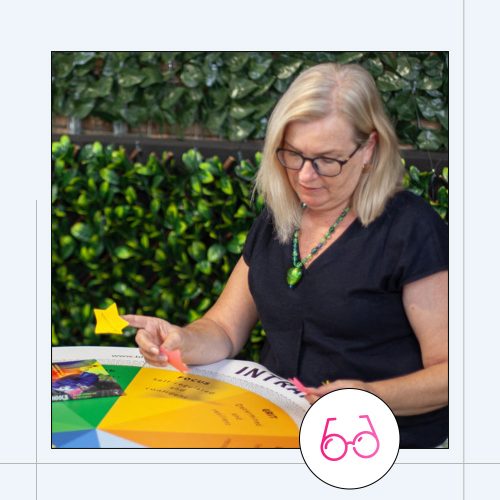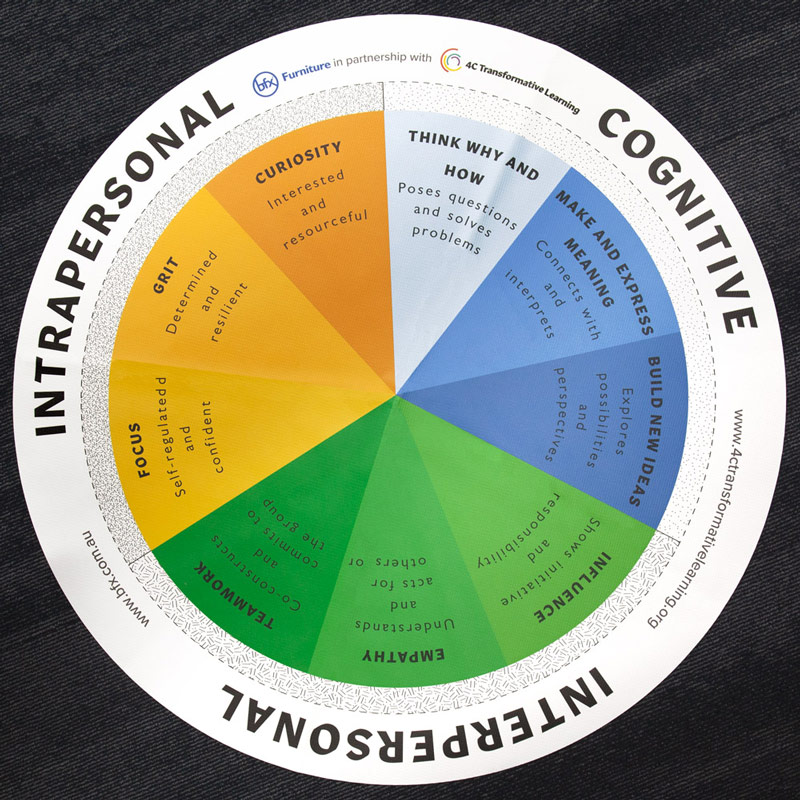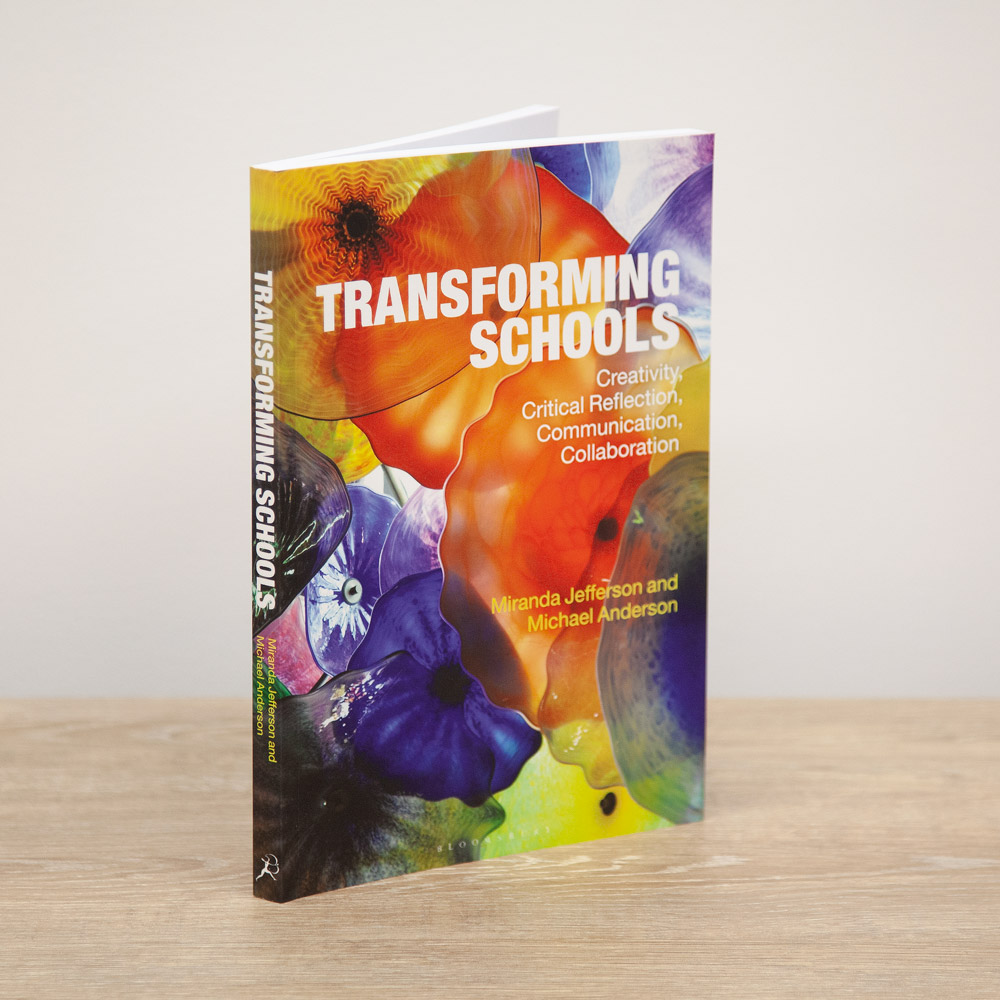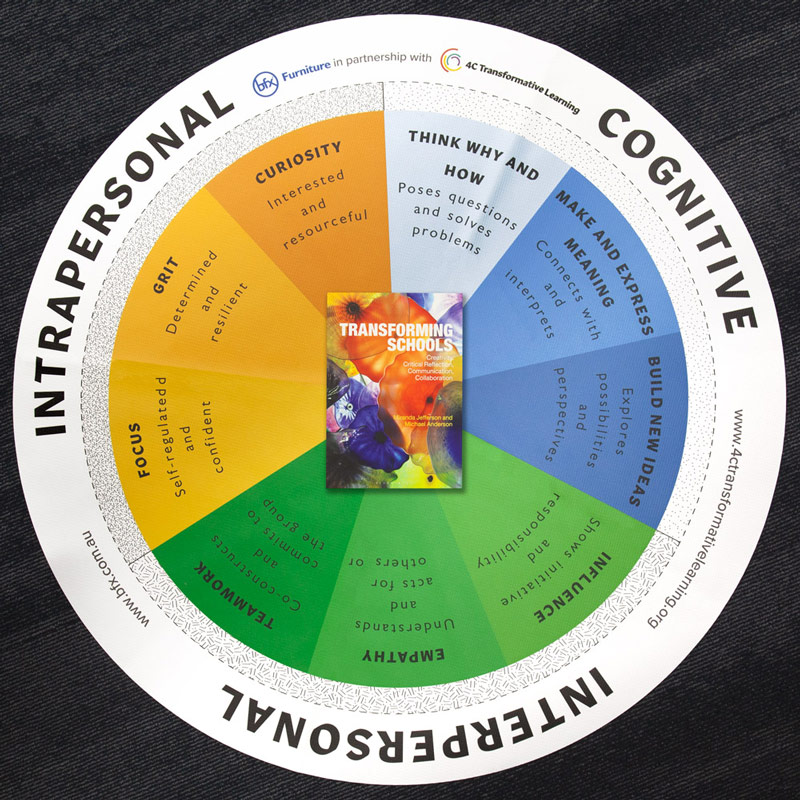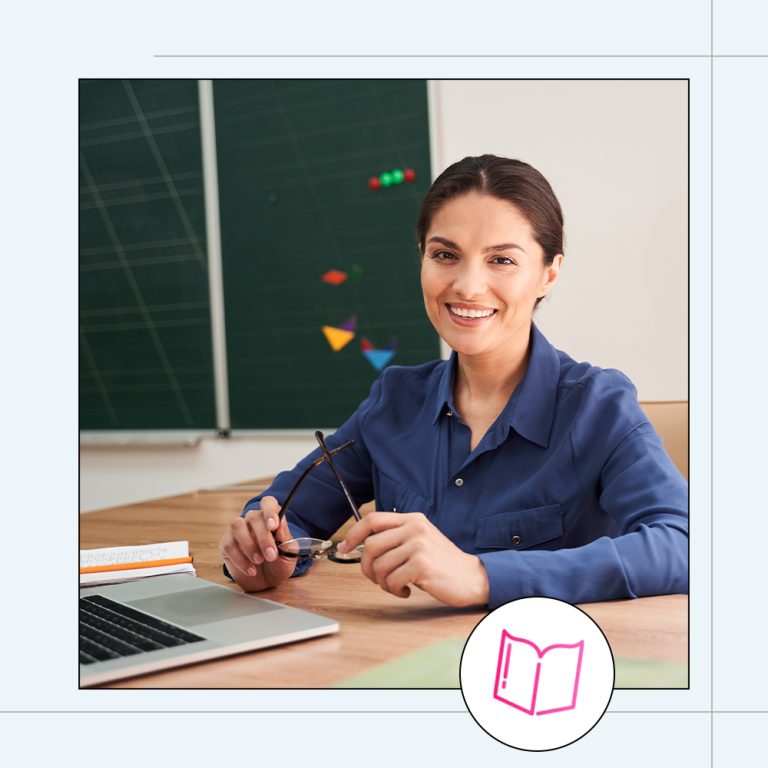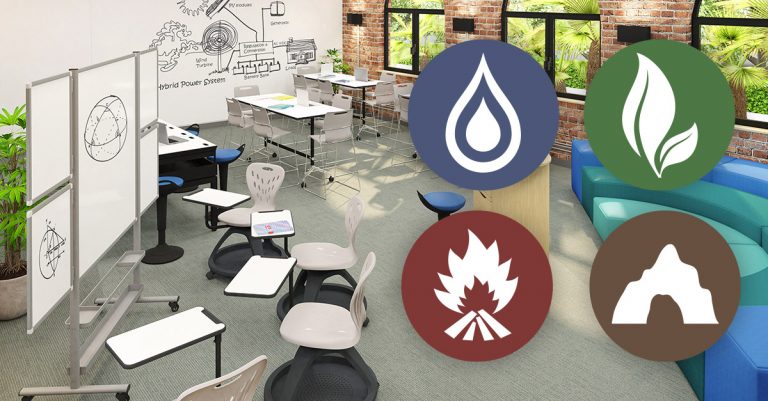
The Learning Disposition Wheel was first published in Transforming Schools (Jefferson and Anderson, 2017) and is now used across early childhood learning, primary, secondary and tertiary education to deepen and connect learning.
The wheel was designed to support students, teachers and the broader school community (parents etc) to understand the qualities that help schools become places where deep and connected learning flourishes.
The design of the wheel emerged from a realisation that for learning to go beyond surface understandings we need to not only understand the ‘what’ of learning (geography, numeracy, history, drama etc) we need how to learn deeply and connect up our learning.
As figure 1 demonstrates the wheel is made up of three broad domains:
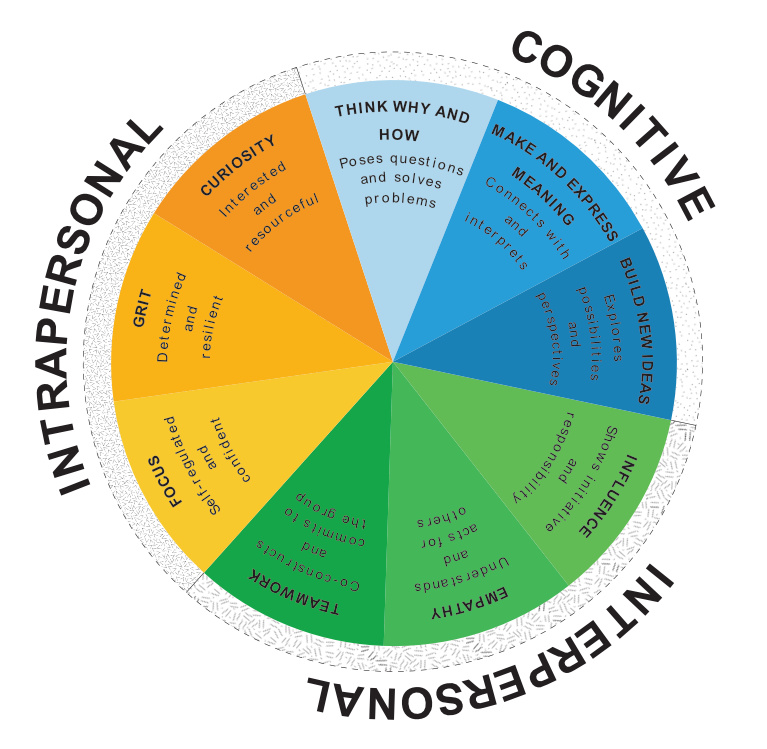
The three interdependent domains are:
- Interpersonal: the capacity to express, interpret and respond to messages from others
- Intrapersonal: the capacity of self-regulating emotions and behaviours to achieve goals and
- Cognitive: the capacity to think and reason
To learn deeply we need to develop dispositions that cover all of those domains.
As you may notice in the wheel, the domains do not sit by themselves, they are interdependent.
Learning is not just cognitive, it relies on the development of intrapersonal and interpersonal dispositions such as teamwork and grit to learn effectively.
In other words, you can’t have two-thirds of a wheel. A wheel relies upon each segment to function.
So in reality this is not just a wheel for learning geography or science it also helps us learn about relationships (teamwork), create a persuasive argument (influence) or help others (empathy). In that sense it is a wellbeing wheel as well.
The advantage of having an agreed set of learning dispositions across an early childhood centre, school or tertiary institution allows a coherent and connected approach to learning for students, teachers and the broader school community.
This means that dispositions that are introduced in early childhood can be developed into year 2 and then onto year 6 and so on.
In secondary schools it means that learning in maths can connect to learning in art and languages education creating connections across the curriculum.
To support educators as they consider using the Learning Disposition Wheel we have included some frequently asked questions.
What is the research behind the learning disposition wheel?
The Learning Disposition Wheel is based on large scale research by the US based National Research Council.
Their report, Education for Life and Work: Developing Transferable Knowledge and Skills in the 21st Century considered the dispositions that were required for students to learn effectively.
The learning disposition wheel interprets this research in a way that can be readily understood by learners of almost all ages.
National Research Council. (2012). Education for Life and Work: Developing Transferable Knowledge and Skills in the 21st Century.
Committee on Defining Deeper Learning and 21st Century Skills, J.W. Pellegrino and M.L. Hilton, Editors. Board on Testing and Assessment and Board on Science Education, Division of Behavioral and Social Sciences and Education. Washington, DC: The National Academies Press.
What can the learning disposition wheel be used for?
The Learning Disposition Wheel can be used to:
Design and engage in learning
When developing learning the Wheel can guide teachers in explicitly teaching the dispositions. As students become more familiar with the dispositions they are able to identify them in their learning and work to strengthen them where they require development.
For instance, if a student is struggling and confused about a mathematical concept such as algebra developing grit (determined and resilient) can assist her to persist through the difficulty and confusion and develop strategies to navigate confusion.
This process of developing grit in facing difficulties can then be applied in other areas of learning in and out of school.
Assess learning
In our partnership schools we are currently co-developing assessment rubrics to use with each of the dispositions in the wheel.
This means that schools who work with us are able to build assessment strategies and tasks that can show growth in the dispositions over time.
As a self-diagnosis tool for learning
In discussions about learning students are often able to identify their strengths and their yet to be strengths on the wheel.
This self-diagnosis provides potential for deep critical reflection for all involved in the learning on how growth in the dispositions can be achieved.
How do teachers use the wheel?
Here is an extract from a discussion with Lucia, explaining how she uses the Learning Disposition Wheel:
Through our initial navigation (mathematics) inquiry in line with the Learning Disposition Wheel, it became immediately apparent how the individual powers (competencies) of the Wheel were dependent on one another to deepen the learning.
The actual task required students to solve an open-ended problem demonstrating a variety of measurement skills incorporating geometry, fractions and decimals and whole number understandings.
The complexities of the task immediately indicated that grit would be a targeted area from the Learning Disposition Wheel if the students were to successfully complete the inquiry.
Through teacher observations during the beginning stages it was identified that even though students were enthusiastic and determined in their inquiry, teamwork was also an essential component. The learning experiences proved complex.
Scaffolded learning experiences quickly drew student attention to the need to plan effectively the steps of their inquiry, which could not be done individually but as the result of working collaboratively with their team.
This led to the realization that working effectively as a team meant each member had a responsibility to the team and each was held accountable to complete the mini tasks building on known understandings and skills.
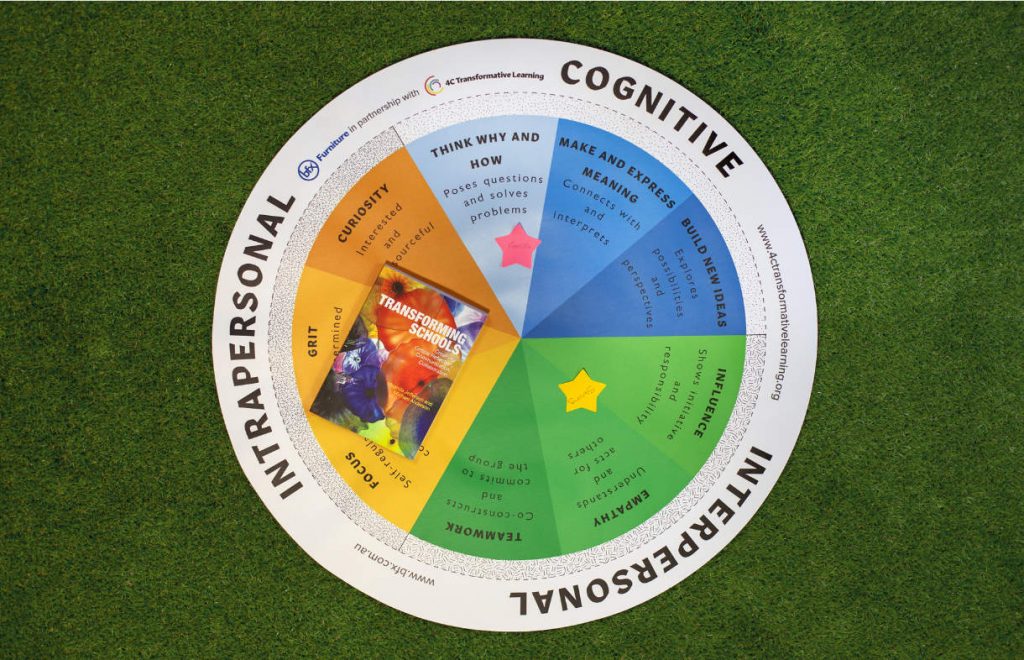
During the course of their investigation students learnt that the power of teamwork relied heavily on their ability to negotiate, listen to other points of view, challenge when necessary and come to a consensus before moving forward.
This was highlighted when a team member who had been absent from school, when her team explained how they had solved the problem, challenged their solution as they had not read all the information provided.
She demonstrated and proved her reasoning to her team.
Discussion of the roles, and responsibility of each team member to double-check solutions and challenge each other’s ideas if they did not agree, rather than just accepting everything one or two teammates said, was a turning point for students allowing them to make the connection between teamwork and grit.
Another connection to the Learning Disposition Wheel that became evident to the students was grit and think why and how.
Throughout the course of the inquiry students had to constantly check for accuracy in their measurements, and select and apply appropriate strategies to solve problems.
There were numerous occasions that the students failed in their initial solutions but due to teamwork, which fostered grit, the students encouraged one another and challenged where necessary, extending each other’s thinking and understanding, delving further into the learning by continually questioning, making decisions based on task requirements, proving their theories and reflecting on their learning at each stage of the inquiry.
The connection between the powers of the Learning Disposition Wheel to student learning made the learning more authentic and powerful.
You value the 4Cs, Creativity, Critical Reflection, Collaboration and Communication but I can’t see them in the wheel?
We believe the 4Cs overarch and underpin all learning and as such they are present in the wheel. The 4Cs are present in the Wheel as they are dispositions for learning, at the same time they are capabilities to navigate successfully the complexity of life.
Creativity is found in Build New Ideas (Cognitive Domain)
Critical Reflection is found in Think Why and How (Cognitive Domain)
Collaboration is found in Teamwork (Interpersonal Domain) and
Communication is found in Make and Express Meaning (Cognitive Domain).
We have written much more about the 4Cs and their relationship to the Learning Disposition Wheel in Transforming Schools,: Creativity, Critical Reflection, Communication and Collaboration.
Where can I learn more about The Learning Disposition Wheel?
We have written extensively about the Learning Disposition Wheel in our new book, Transforming Education (Jefferson and Anderson, 2021) which will be available April 2021 from Bloomsbury.
In the meantime you can find out more about the wheel and contact us through our website www.4ctransformativelearning.org
I would like to explore the Learning Disposition Wheel what can I do?
4C Transformative Learning work with early childhood, school and tertiary institutions in long term partnerships to transform learning, pedagogy, curriculum, leadership.
Our partnerships are long term relationships that employ tools such as the Learning Disposition Wheel to make coherence of the complexity of education.
Our books Transforming Schools introduces the wheel and Transforming Education: Reimagining Learning, Pedagogy and Curriculum explores the wheel in depth.
Jefferson, M., & Anderson, M. (2021). Transforming Education: Reimagining Learning, Pedagogy and Curriculum Bloomsbury Publishing will be available April 2021
Go to https://www.bloomsbury.com/uk/transforming-education-9781350130067/ for more details.

Purchase the Mat, Book or Both!
References
[1] National Research Council. (2012). Education for Life and Work: Developing Transferable Knowledge and Skills in the 21st Century. Committee on Defining Deeper Learning and 21st Century Skills, J.W. Pellegrino and M.L. Hilton, Editors. Board on Testing and Assessment and Board on Science Education, Division of Behavioral and Social Sciences and Education. Washington, DC: The National Academies Press.
[1] Jefferson, M., & Anderson, M. (2017). Transforming schools: Creativity, Critical Reflection, Communication, Collaboration. Bloomsbury Publishing. Available from Bloomsbury. Go to https://www.bloomsbury.com/uk/transforming-schools-9781474232623/ for more details
[1] Jefferson, M., & Anderson, M. (2021). Transforming Education: Reimagining Learning, Pedagogy and Curriculum Bloomsbury Publishing will be available April 2021


